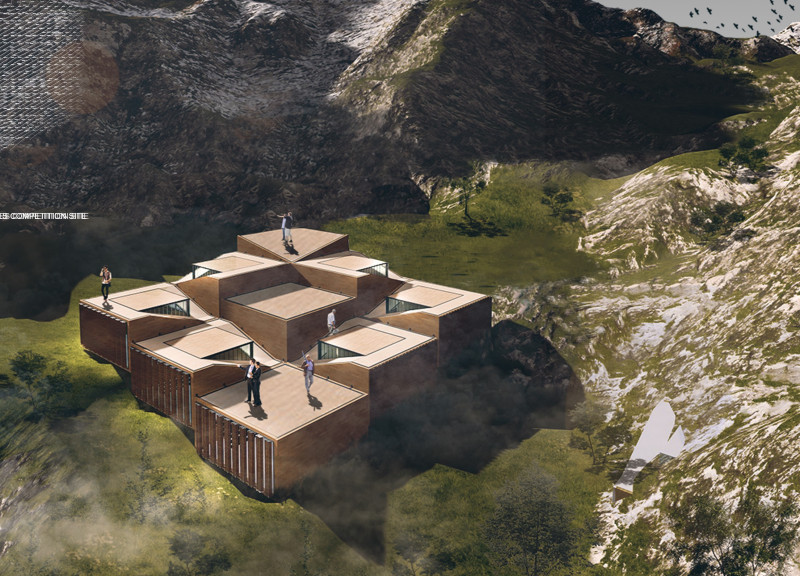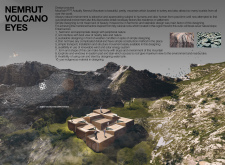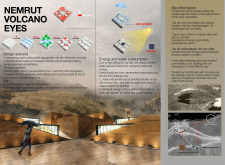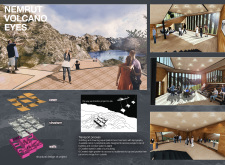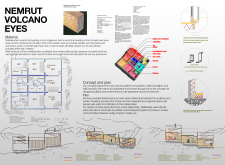5 key facts about this project
**Project Overview**
Located in the ecologically diverse region of Nemrut Mountain in Turkey, the design emphasizes harmony with the surrounding landscape. The structure provides a response to environmental challenges while facilitating user access and interaction with the natural environment. The design centers around modular forms that adapt to the topography, reinforcing the intent to minimize disturbance to the existing site.
**Design Objectives**
The project prioritizes sustainability, incorporating renewable resources and water conservation measures to foster environmental stewardship. Accessibility is achieved through thoughtfully designed pathways and ramps that accommodate the varied terrain, allowing users to appreciate panoramic views without difficulty. Contextual integration is demonstrated through the use of local materials, addressing concerns such as wind exposure and effective water management. Key features include:
- **Sustainable Practices**: The implementation of renewable energy sources, such as solar panels, and a water management system that channels rainwater into storage tanks.
- **Material Selection**: The use of indigenous thermo wood and Parallel Strand Lumber (PSL) enhances thermal efficiency while providing structural integrity. Metal profiles are incorporated for resilience against severe weather, and expansive glass installations ensure visual connectivity with the exterior.
**Spatial Arrangements and Functionality**
The architectural layout features modular components that accommodate essential spaces, including a lobby, exhibition area, and café, all designed to encourage community interaction. The functional distribution of the building supports social engagement, with strategic placements ensuring convenience for users. Expansive windows and open spaces align with natural vistas, enhancing user experience while creating an inviting atmosphere.
By addressing both aesthetic and functional aspects, the design achieves a balance between built and natural environments, contributing to the project's overall ecological integrity. The considerations for severe weather adaptation, alongside efforts to minimize the ecological footprint, reflect a thorough understanding of both local conditions and sustainable architecture.


